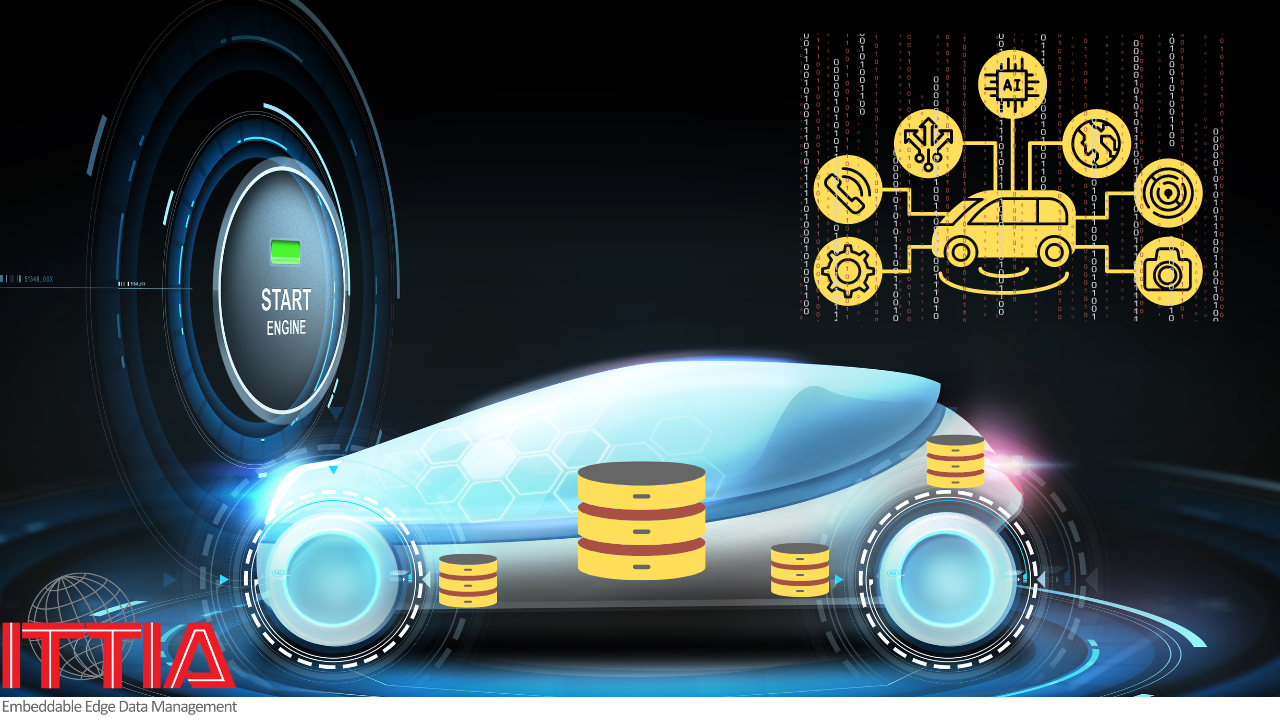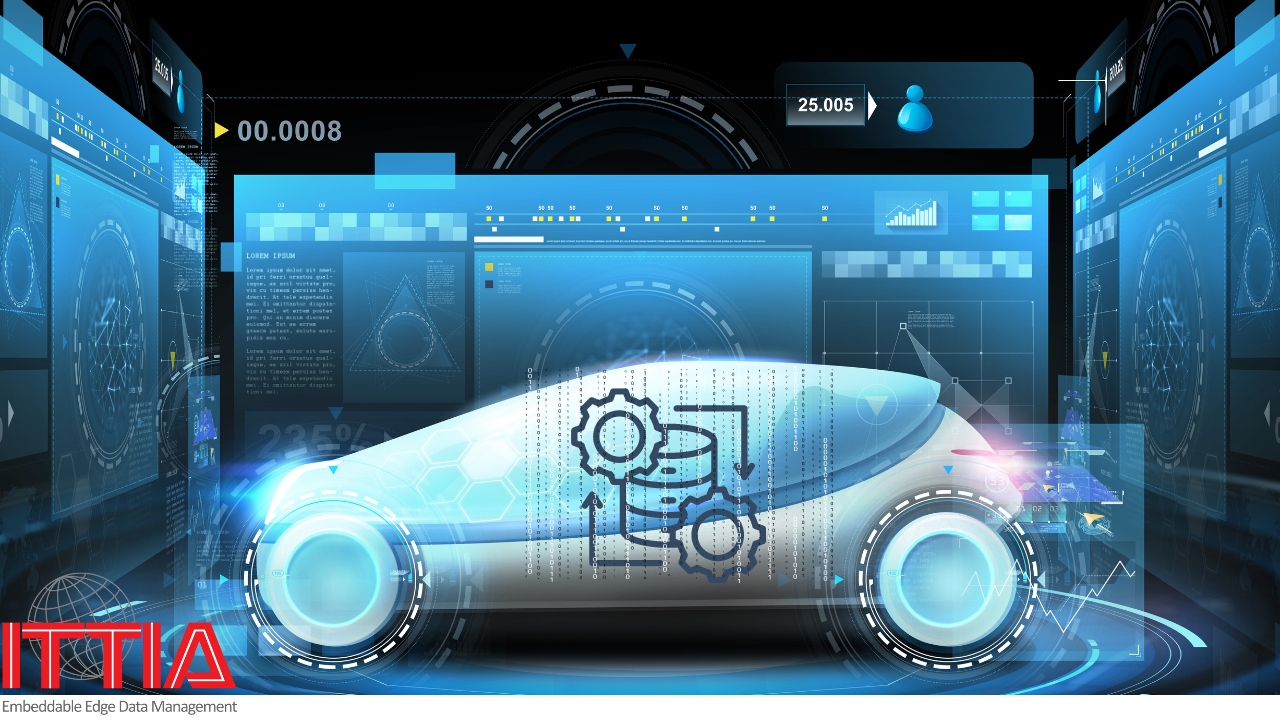Powering the Software-Defined Vehicle revolution
In the rapidly evolving world of automotive technology, software is taking centre stage. Software-Defined Vehicles (SDVs) offer a future of highly customisable features, over-the-air updates, and personalised experiences. This transformation, however, introduces a massive surge in vehicle data that needs to be efficiently managed in real-time.
According to McKinsey: “By 2030, about 95% of new vehicles sold globally will be connected, up from around 50% today. With car data from basic cars conveying many benefits, even players with lower-connectivity-level vehicles can start to monetise data and enter the market.”
ITTIA created a solution to address in-vehicle device data management challenges, empowering automotive OEMs to unlock the full potential of this revolution. ITTIA DB enables in-vehicle real-time device data collection, processing, and computing.

Advantages of SDV data management
SDVs generate an unprecedented amount of data from a multitude of sensors, ECUs (Electronic Control Units), and connected systems. OEMs and tier-1 suppliers seeking options to modernise their traditional data management approaches to handle this large volume of data. They want flexible data management options to embed, deploy, and run apps consistently across devices embedded inside vehicles independently and own their data. Let’s look at a few advantages gained by in-vehicle data computing:
- Latency: critical applications like ADAS (Advanced Driver Assistance Systems) require lightning-fast decision-making. Sending data to the Cloud for processing adds unacceptable delays
- Conformance with standards: the highly regulated nature of the automotive industry necessitates robust automotive product development practices to ensure compliance with a complex web of standards and regulations
- Bandwidth & cost: the constant transmission of vast amounts of data incurs significant bandwidth costs and places strain on communication networks
- Security & privacy: automotive data is highly sensitive, and over-reliance on Cloud connectivity increases the risk of breaches and privacy concerns
- Data ownership: OEMs and or Tier-1s must take ownership of data from its generation and collection through to its storage, analysis, and potential deletion
In addition, rapidly gaining insight is a significant challenge for SDV architectures as devices inside the vehicle must gain intelligence. There is a direct correlation between intelligence and data management. To conduct data management campaigns that strengthen the competitive edge and empower devices to gain intelligence, data processing to run inside vehicle devices is a requirement. Like the Internet of Things phenomenon, the sensors, data sources, and devices found inside the vehicle generate a large volume of raw data, much of which is not interesting by itself. Modern technologies like ITTIA DB enable these devices to convert raw data into usable information with stream processing and data query capabilities so embedded systems gain insight and understanding of the system. As a result, device applications embedded with ITTIA DB can choose how to collect, process, analyse and either store or transmit only valuable information on their own intelligence.
This enablement offers OEMs and tier 1 suppliers the ability to build data-sensitive applications quickly while maintaining stringent controls and ownership over the data inside the device.
In the era of SDV, sensors capture and transmit enormous volumes of time-series data and turning automobiles into intelligent machines. Time-series data comprises a series of measurements or events that are tracked and monitored as they fluctuate over time. In-vehicle data management software like ITTIA DB which is a time series database are designed to filter, down sample, and aggregate timestamped data, then store the results on each device. As a result, data about a system's current state, trends, and past patterns is easily retrievable. Applications can also manage concurrent inputs, allowing SDV devices to simultaneously store and process numerous data streams and aiding in integrated analysis.
The combination of time series storage and stream processing offers data to be efficiently indexed using timestamps; the timestamp linked to each data item serves as the computation's primary input. Also, time series data from connected devices inside the vehicle form a data stream that is continuously gathered and flows into the database. As a result, the overall data traffic will remain stable while devices perform instantaneous data computing.
Key use cases for time series data management and streaming embedded into SDVs
The capability to securely handle vast amounts of data in real-time helps meet various automotive specific use cases:
- Predictive maintenance: collect and analyse data from ECUs to identify wear patterns and predict component failures, enabling timely and cost-effective maintenance
- ADAS optimisation: store and process sensor data locally to enhance ADAS features like obstacle detection, lane departure warnings, and adaptive cruise control
- Personalised driving experience: securely store driver preferences and usage behaviour on-board to provide tailored settings for seating, infotainment, and climate control
- Over-the-Air (OTA) updates: manage and track software versions and dependencies on individual ECUs for seamless, reliable software updates
- Fleet management & learning: support selective sharing of insights derived from ITTIA DB instances across vehicles to optimise fleet performance and train more robust AI/ML models

Ability to collect and analyse real-time data from devices inside vehicles allows manufacturers to optimise SDV designs. When devices aggregate, analyse, and prepare data coming from sensors, vehicles are empowered to improve reliability by benefiting from refined data. As a result, they can build applications to predict when components are likely to fail. Processed cleaned data allows OEMs and tier-1 suppliers applications to benefit from refined data to perform maintenance before a breakdown occurs, reducing the risk of accidents and improving the reliability of vehicles. ITTIA DB offers great value for real-time data management performance, optimised storage, robust security, and adaptability to automotive SDV platform.
More information about ITTIA DB real time data processing and management for SDVs is available here.










